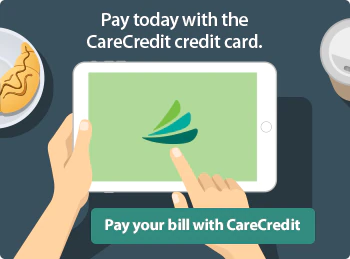In today’s fast-paced world, managing our health can often feel overwhelming, especially when it comes to hormones and metabolic conditions. Luckily, technology is stepping in to help. Remote Patient Monitoring (RPM) is transforming how we approach these health issues, making it easier than ever for patients to stay connected with their healthcare providers. In this blog, we’ll explore what RPM is, its benefits, and how it can support your hormone and metabolic health.
Understanding Remote Patient Monitoring
Remote Patient Monitoring (RPM) refers to the use of technology to collect health data from patients in one location and electronically transmit it to healthcare providers in a different location. This innovative approach allows for continuous monitoring and can be particularly beneficial for patients with hormone and metabolic imbalances.
At its core, RPM enables a seamless exchange of health information, making it possible for healthcare providers to receive real-time data. This data is crucial for detecting changes in a patient’s condition before they escalate into serious health issues. Imagine having the capability to track your hormonal levels without needing multiple clinic visits! This is particularly advantageous for individuals managing chronic conditions.
Moreover, RPM fosters a sense of empowerment among patients. By actively engaging in their health monitoring, patients gain insights into how lifestyle choices affect their hormone and metabolic levels. This increased awareness can motivate healthier decisions—such as dietary adjustments and exercise regimes—leading to improved overall well-being.
The Importance of Hormonal and Metabolic Health
Hormones play a pivotal role in regulating vital bodily functions such as metabolism, mood, and energy levels. Imbalances can lead to various health issues, making it essential to monitor these indicators closely. Understanding this connection is the first step in utilizing RPM effectively.
In our bodies, hormones act as messengers, influencing everything from growth and development to mood and cognitive functions. When these hormones are out of balance, it can result in a range of metabolic disorders, such as obesity, diabetes, and thyroid dysfunction. By regularly tracking hormonal levels through RPM, individuals can identify potential issues before they develop into more severe problems.
Additionally, the interconnectivity between hormones and metabolism means that addressing one often requires attention to the other. Through RPM, patients can receive holistic insights that not only target a specific hormone but also consider the broader metabolic landscape. This comprehensive view empowers patients in their health journey and ensures that both hormonal and metabolic aspects are addressed in treatments.
Incorporating RPM into hormonal health management creates a proactive healthcare environment where patients no longer wait until symptoms become unmanageable. Instead, they can maintain their health dynamically, making lifestyle adjustments as needed, and collaborating closely with their healthcare providers.
How Remote Patient Monitoring Works
RPM systems typically involve wearable devices or apps that track health metrics such as blood sugar levels, heart rate, or hormone levels. This data is then shared with healthcare providers, allowing for timely interventions and adjustments to treatment plans.
The setup usually consists of various gadgets depending on the patient’s needs. Devices like continuous glucose monitors (CGMs) track glucose levels for diabetics, while hormone-specific monitors can track fluctuations in estrogen or testosterone. The most exciting part is how seamlessly these devices transmit information, often in real-time, through secured applications.
Once the data reaches healthcare providers, it opens up a new dialogue. Instead of relying on traditional check-ups where information can become outdated quickly, providers can be more responsive. For example, if a patient’s hormone levels indicate a severe dip, a healthcare team can suggest immediate modifications to medications or lifestyle changes. This ensures better management rather than reacting to symptoms after the fact.
Benefits of Using RPM for Hormone and Metabolic Health
There are numerous benefits to using RPM for hormone and metabolic health, including increased accessibility to care, improved patient engagement, and enhanced data accuracy. These factors contribute to better health outcomes and a more personalized approach to treatment.
Firstly, accessibility is a game changer. Patients who may have difficulty attending regular appointments can now receive continuous care from the comfort of their homes. This is particularly vital for those in remote or underserved areas. With RPM, expert guidance is just a click away, reducing the burden on patients and making healthcare more equitable.
Moreover, RPM inherently boosts engagement. When patients see the results of their health data evolving in real time, it encourages them to take a more active role in their health management. This heightened engagement can lead to better adherence to treatment plans and lifestyle modifications that benefit hormonal and metabolic health.
Another critical aspect is the accuracy of data collected through these systems. With continuous monitoring, health practitioners obtain a wealth of precise information, which can lead to more informed diagnoses and treatment adjustments. Such attention to detail can ultimately translate to enhanced health outcomes, as decisions are made based on reliable data rather than sporadic visits.
Real-Life Success Stories
Many patients have experienced remarkable improvements in their health through RPM. From managing diabetes to addressing thyroid imbalances, these stories highlight the potential of technology in transforming health management.
Take Sarah, for example. After struggling with insulin resistance and feeling constantly fatigued, she began using an RPM system. With her glucose levels tracked continuously, she learned how different foods affected her blood sugar. As a result, Sarah was able to modify her diet and significantly enhance her energy levels. Her story exemplifies how RPM isn’t just about data; it’s about personal transformation.
Then there’s John, who faced long-standing issues with thyroid regulation. His healthcare team implemented RPM tools specifically designed for hormone monitoring. The real-time feedback allowed them to adjust his medication promptly based on his hormonal fluctuations, ultimately stabilizing his levels. John now feels more vibrant and engaged in life, showcasing the direct impact RPM can have on quality of life.
Challenges and Considerations
While RPM offers substantial benefits, it’s not without challenges. Concerns such as data privacy, the need for technical literacy among patients, and ensuring access to necessary technology must be addressed to maximize its efficacy.
Data security must remain a priority in any RPM initiative. Protecting sensitive health information from breaches is crucial, as it fosters trust between patients and providers. If patients feel their data may be compromised, they might hesitate to engage fully with RPM tools, undermining the whole purpose of these technologies.
Additionally, not all patients are tech-savvy. This disparity in technical literacy can pose a significant barrier, particularly for older adults. Education and support systems must be introduced alongside RPM projects to ensure all patients can benefit from these advancements. Accessibility is key here, as is a supportive environment where patients feel comfortable asking questions.
The Future of RPM in Hormone and Metabolic Care
As technology continues to advance, the future of Remote Patient Monitoring looks promising. Integration with artificial intelligence and machine learning can lead to even more personalized and proactive health management strategies, making RPM an indispensable part of modern healthcare.
Imagine a situation where your RPM system analyzes your data trends and presents you with tailored recommendations without any manual input from you. Artificial intelligence could identify patterns and predict potential health issues before they even become apparent, effectively acting as your health watchdog. This innovation would herald an era where proactive care becomes the norm rather than the exception.
Furthermore, as healthcare systems embrace more extensive data collection, the information gathered through RPM could contribute valuable insights on a societal level. Researchers could analyze aggregated data from diverse populations to identify trends or emerging health challenges. This broader perspective could ultimately lead to new treatments and prevention strategies for hormone and metabolic conditions.
Embracing the Future of Health Management
Remote Patient Monitoring is not just a health trend; it’s a valuable tool that empowers patients to take control of their hormonal and metabolic health. By utilizing RPM, you can improve the way you manage your health, receive timely insights, and enhance communication with your healthcare team. As we continue moving toward a more digital healthcare landscape, embracing technologies like RPM could be your key to a healthier future.















